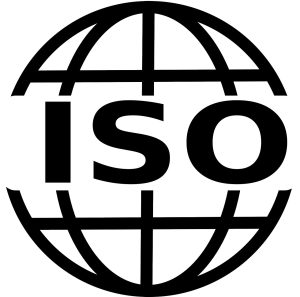Improving Sustainability – ISO Standard 59010
Many architects and facility teams need help to improve sustainability and efficiency in the built environment and new commercial projects. However, the International Standards Organization (ISO) can now assist organizations, architects, and facility managers in transitioning from the traditional linear business model through a new family of standards, ISO 59000. This new standard is part of ISO 59000, a family of related standards designed to help organizations move to a circular economy business model. ISO 59010 was created to guide organizations wishing to transition their business, value creation models, and networks to a circular economy framework.

The ISO is a worldwide federation of national standards bodies that define what great looks like by setting consistent product and service benchmarks for businesses and consumers. International standards ensure your daily products and services are high-quality, safe, and durable. Standards seamlessly blend quality with conscience to enhance your everyday experiences and choices. These standards help build customer trust by simplifying decision-making to make our lives easier, safer, and better.
They also guide businesses in adopting ethical business and sustainability practices, helping to create a future where your purchases perform well while helping protect the planet.
The ISO Certification Process
Each ISO standard undergoes a thorough review every five years to ensure compatibility with all other ISO standards while reflecting changing marketplace needs. As the standards change, businesses change their products or services to remain compliant.
An ISO certification is generally seen as an independent third-party seal of approval for quality assurance. The certification process varies slightly depending on the certification being sought. The most popular certifications include:
- ISO 9001 (for quality management systems)
- ISO 22000 (for food safety management systems)
- ISO 27000 (for informational security systems)
- ISO 14000 (for environmental management systems)
The number that appears after ISO classifies the standard to which a product is certified. Because the ISO is a non-governmental body, its guidelines are not directly enforceable by law. However, ISO certification shows consistency across the products or services being offered, which can help better meet customer expectations.
What is ISO 59010?
This standard focuses on business-oriented strategies to implement circular economy principles at both organizational and inter-organizational levels. It provides detailed guidance on assessing current value creation models, mapping value chains and value networks, and developing strategies for circularity. This new standard is designed to help organizations make this transition effectively, contributing to sustainable building practices and a resilient global economy.
How Does ISO 59010 Support the Circular Economy?
Many business models today still utilize the old way of doing business which requires harvesting the planet’s limited resources to meet changing consumer product demands. Unfortunately for the planet, once a product reaches the end of its lifecycle, it is discarded in the local landfill.
With a circular economy business model, stakeholders start the product design process with the goal of repurposing and reusing products at the end of their lifecycle. Adopting a circular business model across the construction industry can:
- Conserve up to 40% of energy currently used in real estate.
- Reduce real estate carbon emissions by 38%.
- Cut building material emissions by 38% through 2050.
The Ellen MacArthur Foundation identified five emerging trends for owners, architects, designers, and contractors to consider.
- Flexible Spaces, building on co-working trends by listing unoccupied spaces online for short-term tenants.
- Adaptable Assets, are buildings that can adapt to more than one use during their lifetime through streamlined retrofitting.
- Relocatable Buildings, moving across several unused locations thanks to modular design and highly durable materials.
- Residual Value, creating futures contracts for leftover materials at the end of a building’s life cycle.
- Performance Procurement takes the concept of product-as-a-service to the building level, where construction clients and tenants buy subscriptions for services rather than using their capital expenditures.
Today, numerous products in the marketplace support circular economy goals, such as minimal waste while simultaneously simplifying future upgrades. Low-profile access flooring is one example that helps promote the benefits of a circular economy while simultaneously improving the flexibility and longevity of the data and power management infrastructure of any commercial space.
The Gridd® Adaptive Cabling Distribution System relocates data and power cables to the underfoot space (1.6” or 2.75”) above the finished concrete slab. With quick and easy access, the cabling and wiring can be reconfigured countless times as the tenant’s needs change. IF you ever need to relocate to another physical location, the entire raised flooring system can move. Gridd is available as a subscription service and also features a buy-back program.
According to The McMorrow Reports, Gridd is a prime example of the best circular economy principles applied to access flooring systems.
Thanks to its modular construction, a Gridd System installed 25+ years ago is 100% compatible and interchangeable with today’s Gridd product line.
Gridd’s 100% steel construction provides unparalleled strength and durability throughout the building’s lifecycle, improving LEED scores for new commercial properties and built environment projects.
With quick and easy access, the relocated data and power management cables can be expanded, upgraded, or reconfigured as new business technologies become available.
Contact a Gridd Advisor to learn how Gridd can help your organization meet these circular economy goals through sustainable sourcing, modular construction, unlimited adaptability, and future flexibility.

